-
 Bitcoin
Bitcoin $85,755.8002
1.64% -
 Ethereum
Ethereum $1,645.6905
1.27% -
 Tether USDt
Tether USDt $0.9998
0.02% -
 XRP
XRP $2.1577
1.11% -
 BNB
BNB $589.4257
0.30% -
 Solana
Solana $132.0805
-0.60% -
 USDC
USDC $1.0000
0.01% -
 TRON
TRON $0.2534
-1.14% -
 Dogecoin
Dogecoin $0.1610
-2.84% -
 Cardano
Cardano $0.6440
-0.39% -
 UNUS SED LEO
UNUS SED LEO $9.4349
0.54% -
 Chainlink
Chainlink $12.7648
0.18% -
 Avalanche
Avalanche $20.0359
0.31% -
 Stellar
Stellar $0.2412
-0.10% -
 Toncoin
Toncoin $2.9297
3.26% -
 Sui
Sui $2.2079
-2.65% -
 Hedera
Hedera $0.1679
-0.55% -
 Shiba Inu
Shiba Inu $0.0...01200
-2.02% -
 Bitcoin Cash
Bitcoin Cash $333.3530
-3.38% -
 Litecoin
Litecoin $78.5280
0.39% -
 Polkadot
Polkadot $3.6858
-0.63% -
 Hyperliquid
Hyperliquid $16.2142
3.18% -
 Dai
Dai $0.9998
-0.01% -
 Bitget Token
Bitget Token $4.3249
0.75% -
 Pi
Pi $0.7441
-1.29% -
 Ethena USDe
Ethena USDe $0.9990
0.02% -
 Monero
Monero $212.5820
2.77% -
 Uniswap
Uniswap $5.4137
-0.50% -
 Pepe
Pepe $0.0...07502
0.93% -
 OKB
OKB $52.3495
-1.44%
What is sharding technology and how does it improve blockchain performance?
Sharding enhances blockchain scalability by splitting the database into shards, allowing parallel transaction processing and reducing fees, though it poses security and complexity challenges.
Apr 13, 2025 at 09:42 am
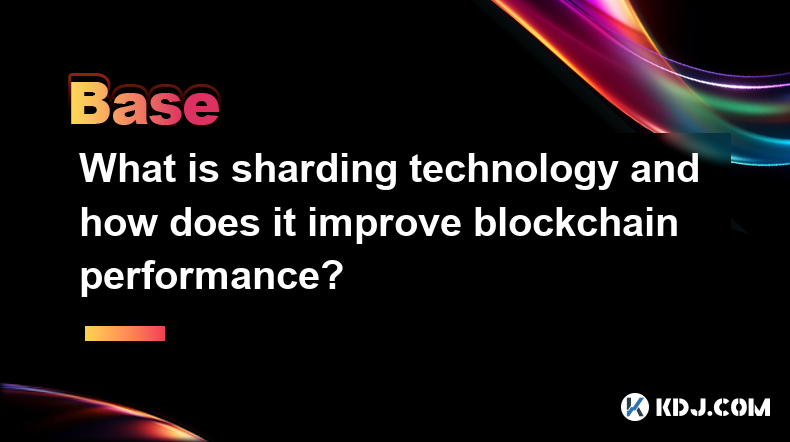
Sharding technology is a significant advancement in blockchain technology designed to enhance the scalability and performance of blockchain networks. Sharding involves splitting a blockchain's database into smaller, more manageable parts called shards. Each shard contains its own subset of data and transactions, allowing the network to process multiple transactions in parallel. This parallel processing capability significantly improves the overall throughput and efficiency of the blockchain.
The primary goal of sharding is to address the scalability limitations of traditional blockchains. As more users join a blockchain network and the number of transactions increases, the network can become congested, leading to slower transaction times and higher fees. By implementing sharding, a blockchain can handle a larger volume of transactions without compromising on speed or security.
How Sharding Works
Sharding works by dividing the blockchain's state and transaction processing into smaller segments. Each shard is responsible for processing a subset of the total transactions on the network. For example, in a blockchain with 100 shards, each shard would handle 1% of the total transactions. This division allows the network to process transactions concurrently, rather than sequentially, which results in faster transaction processing times.
To ensure the integrity of the blockchain, shards must communicate with each other. This communication is facilitated through a process known as cross-shard communication. When a transaction involves data from multiple shards, the shards must coordinate to validate and process the transaction. This process can be complex, but it is essential for maintaining the decentralized and secure nature of the blockchain.
Benefits of Sharding
One of the most significant benefits of sharding is improved scalability. By processing transactions in parallel across multiple shards, a blockchain can handle a much higher volume of transactions per second. This scalability is crucial for blockchain networks that aim to support large-scale applications, such as decentralized finance (DeFi) platforms or large-scale gaming ecosystems.
Another benefit of sharding is reduced transaction fees. In a congested blockchain network, users often have to pay higher fees to prioritize their transactions. With sharding, the network can process more transactions simultaneously, reducing congestion and, consequently, transaction fees. This makes the blockchain more accessible to a broader range of users.
Sharding also enhances the overall performance of the blockchain. By distributing the workload across multiple shards, the network can achieve faster transaction confirmation times. This improved performance is essential for applications that require real-time processing, such as payment systems or trading platforms.
Challenges and Considerations
While sharding offers significant benefits, it also presents several challenges. One of the main challenges is ensuring the security of the network. With the blockchain split into multiple shards, there is a risk that a malicious actor could compromise a single shard and disrupt the entire network. To mitigate this risk, blockchain developers must implement robust security measures, such as cross-shard validation and consensus mechanisms.
Another challenge is the complexity of cross-shard communication. As mentioned earlier, transactions that involve multiple shards require coordination between those shards. This coordination can be complex and may introduce additional latency. Blockchain developers must carefully design their sharding protocols to minimize this latency and ensure smooth cross-shard communication.
Additionally, sharding can impact the decentralization of the network. In a sharded blockchain, nodes may need to specialize in processing transactions for specific shards, which could lead to a more centralized network structure. To maintain decentralization, blockchain developers must ensure that nodes can easily switch between shards and that the network remains accessible to a diverse range of participants.
Implementation of Sharding in Existing Blockchains
Several blockchain projects have already implemented or are in the process of implementing sharding technology. Ethereum, one of the most widely used blockchain platforms, is actively working on integrating sharding through its Ethereum 2.0 upgrade. The Ethereum 2.0 upgrade aims to improve the scalability and performance of the Ethereum network by introducing shard chains that can process transactions in parallel.
Zilliqa is another blockchain platform that has successfully implemented sharding. Zilliqa uses a sharding protocol to divide its network into multiple shards, each capable of processing transactions independently. This sharding approach has allowed Zilliqa to achieve high transaction throughput, making it suitable for applications that require fast and efficient processing.
Other blockchain projects, such as Polkadot and Near Protocol, are also exploring sharding as a means to enhance their scalability and performance. These projects are developing innovative sharding protocols that aim to address the challenges associated with sharding while maximizing its benefits.
Practical Example of Sharding
To better understand how sharding works in practice, let's consider a hypothetical example. Imagine a blockchain network that processes 100 transactions per second and is divided into 10 shards. Each shard would be responsible for processing 10 transactions per second. If a user wants to send a transaction that involves data from two different shards, the following steps would occur:
- The user initiates the transaction and sends it to the network.
- The transaction is received by the nodes responsible for the two relevant shards.
- The nodes on each shard validate the transaction and process their respective parts of the transaction.
- The shards communicate with each other to ensure the transaction is valid across both shards.
- Once the transaction is validated and processed, it is recorded on both shards and the user receives confirmation.
This example illustrates how sharding allows a blockchain to process transactions in parallel, improving overall performance and scalability.
Frequently Asked Questions
Q: Can sharding be implemented on any blockchain?
A: Sharding can be implemented on most blockchain networks, but it requires significant changes to the underlying protocol. Not all blockchains are designed to support sharding, so it depends on the specific architecture and consensus mechanism of the blockchain.
Q: How does sharding affect the security of a blockchain?
A: Sharding can introduce new security risks, such as the potential for a single shard to be compromised. However, with proper security measures, such as cross-shard validation and robust consensus mechanisms, these risks can be mitigated.
Q: What are the main differences between sharding and other scalability solutions, such as layer-2 scaling?
A: Sharding is a layer-1 scaling solution that involves modifying the core blockchain protocol to improve scalability. Layer-2 scaling solutions, such as sidechains or state channels, operate on top of the existing blockchain and do not require changes to the core protocol. Both approaches have their advantages and are often used in combination to achieve optimal scalability.
Q: How long does it typically take to implement sharding on a blockchain?
A: The timeline for implementing sharding can vary significantly depending on the complexity of the blockchain and the specific sharding protocol being used. Some projects, like Ethereum, have been working on sharding for several years, while others may implement it more quickly. The process typically involves extensive testing and development to ensure the sharding protocol is secure and effective.
Disclaimer:info@kdj.com
The information provided is not trading advice. kdj.com does not assume any responsibility for any investments made based on the information provided in this article. Cryptocurrencies are highly volatile and it is highly recommended that you invest with caution after thorough research!
If you believe that the content used on this website infringes your copyright, please contact us immediately (info@kdj.com) and we will delete it promptly.
- BlockDAG's Keynote 3 Reveals Mainnet Launch Plans! SHIB & TON Whale Activity Surges
- 2025-04-15 14:00:12
- The April Shake-Up: Exploring Opportunities in the Altcoin Market
- 2025-04-15 14:00:12
- “The stock market is a device for transferring money from the impatient to the patient.”
- 2025-04-15 13:55:13
- 4 Coins to Watch in the Race to $1 by 2025
- 2025-04-15 13:55:13
- #Binance **⚠️ P2P Scam Warning**
- 2025-04-15 13:50:12
- Why This Utility Token Going Viral More Than Meme; Dogecoin, Shiba Inu & Pepe Coin?
- 2025-04-15 13:50:12
Related knowledge
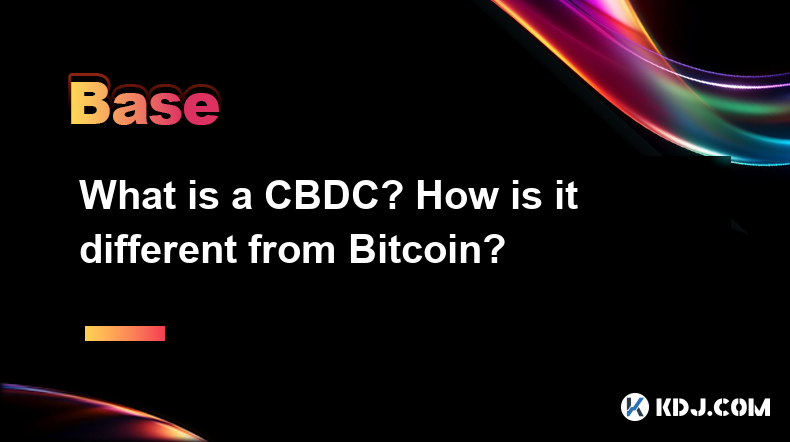
What is a CBDC? How is it different from Bitcoin?
Apr 15,2025 at 01:49pm
A Central Bank Digital Currency (CBDC) represents a digital form of a country's fiat currency, issued and regulated by its central bank. Unlike traditional physical currencies, CBDCs exist purely in digital form, offering a new way for governments to manage their monetary systems. CBDCs are designed to provide the benefits of digital currencies while ma...
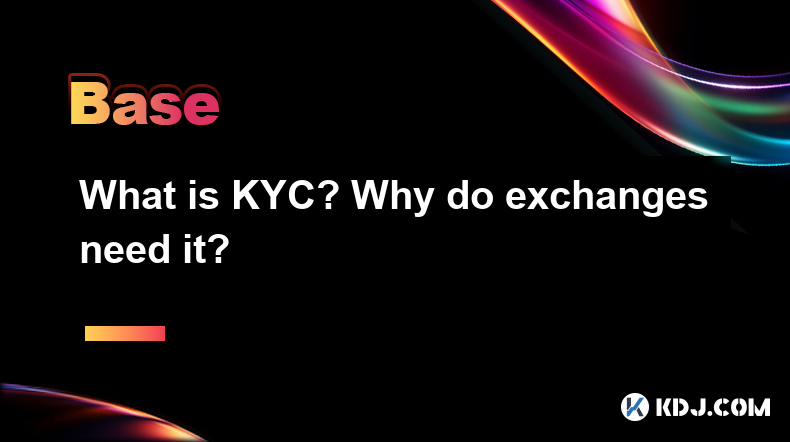
What is KYC? Why do exchanges need it?
Apr 15,2025 at 02:01pm
KYC, or Know Your Customer, is a process used by businesses, including cryptocurrency exchanges, to verify the identity of their clients. The primary goal of KYC is to prevent illegal activities such as money laundering, fraud, and terrorist financing. By implementing KYC procedures, exchanges can ensure compliance with regulatory requirements and maint...
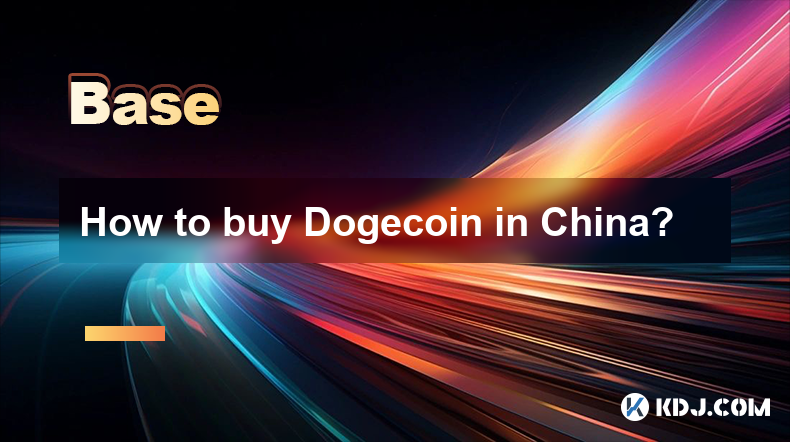
How to buy Dogecoin in China?
Apr 14,2025 at 04:35pm
How to buy Dogecoin in China (DOGE) Dogecoin is a decentralized digital currency known for its iconic dog pattern. Here are the detailed steps on how to buy Dogecoin in China. step 1. Register a digital currency exchange account First, you need to register an account on a digital currency trading platform regulated by China. It is recommended to choose ...

Ouyi Exchange web version registration portal
Apr 15,2025 at 01:28pm
Ouyi Exchange web version registration guide: Get started quickly How to create an account on the Ouyi Exchange web version? The process of creating an Ouyi Exchange web version account is very simple, just follow the following steps: Browse to the official website of Ouyi Exchange. Click the "Register" option in the upper right corner of the ...

What is Delayed Encryption technology?
Apr 11,2025 at 10:42pm
What is Delayed Encryption Technology? In the world of cryptocurrencies, security is paramount. One of the innovative solutions to enhance the security of digital transactions is Delayed Encryption Technology. This technology introduces a layer of security by encrypting data with a time delay, ensuring that the information remains secure until a specifi...
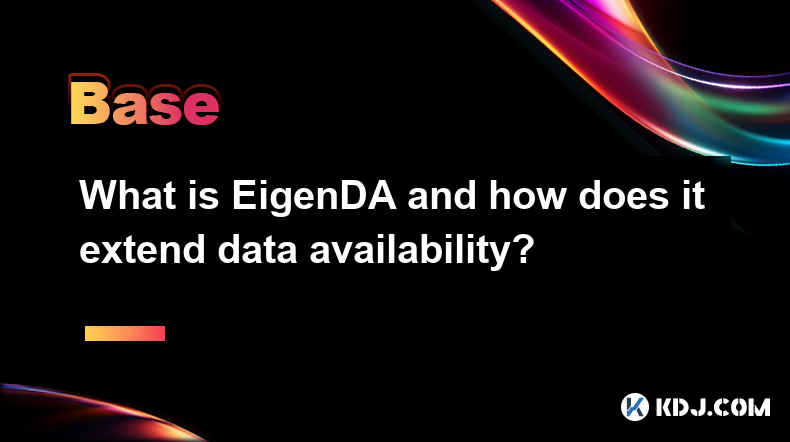
What is EigenDA and how does it extend data availability?
Apr 11,2025 at 05:28pm
EigenDA is a groundbreaking solution within the cryptocurrency ecosystem designed to enhance data availability across blockchain networks. Developed by EigenLayer, EigenDA aims to address the critical issue of data availability, ensuring that all participants in a blockchain network can access the necessary data to verify transactions and maintain the i...

What is a CBDC? How is it different from Bitcoin?
Apr 15,2025 at 01:49pm
A Central Bank Digital Currency (CBDC) represents a digital form of a country's fiat currency, issued and regulated by its central bank. Unlike traditional physical currencies, CBDCs exist purely in digital form, offering a new way for governments to manage their monetary systems. CBDCs are designed to provide the benefits of digital currencies while ma...

What is KYC? Why do exchanges need it?
Apr 15,2025 at 02:01pm
KYC, or Know Your Customer, is a process used by businesses, including cryptocurrency exchanges, to verify the identity of their clients. The primary goal of KYC is to prevent illegal activities such as money laundering, fraud, and terrorist financing. By implementing KYC procedures, exchanges can ensure compliance with regulatory requirements and maint...

How to buy Dogecoin in China?
Apr 14,2025 at 04:35pm
How to buy Dogecoin in China (DOGE) Dogecoin is a decentralized digital currency known for its iconic dog pattern. Here are the detailed steps on how to buy Dogecoin in China. step 1. Register a digital currency exchange account First, you need to register an account on a digital currency trading platform regulated by China. It is recommended to choose ...

Ouyi Exchange web version registration portal
Apr 15,2025 at 01:28pm
Ouyi Exchange web version registration guide: Get started quickly How to create an account on the Ouyi Exchange web version? The process of creating an Ouyi Exchange web version account is very simple, just follow the following steps: Browse to the official website of Ouyi Exchange. Click the "Register" option in the upper right corner of the ...

What is Delayed Encryption technology?
Apr 11,2025 at 10:42pm
What is Delayed Encryption Technology? In the world of cryptocurrencies, security is paramount. One of the innovative solutions to enhance the security of digital transactions is Delayed Encryption Technology. This technology introduces a layer of security by encrypting data with a time delay, ensuring that the information remains secure until a specifi...

What is EigenDA and how does it extend data availability?
Apr 11,2025 at 05:28pm
EigenDA is a groundbreaking solution within the cryptocurrency ecosystem designed to enhance data availability across blockchain networks. Developed by EigenLayer, EigenDA aims to address the critical issue of data availability, ensuring that all participants in a blockchain network can access the necessary data to verify transactions and maintain the i...
See all articles























































































